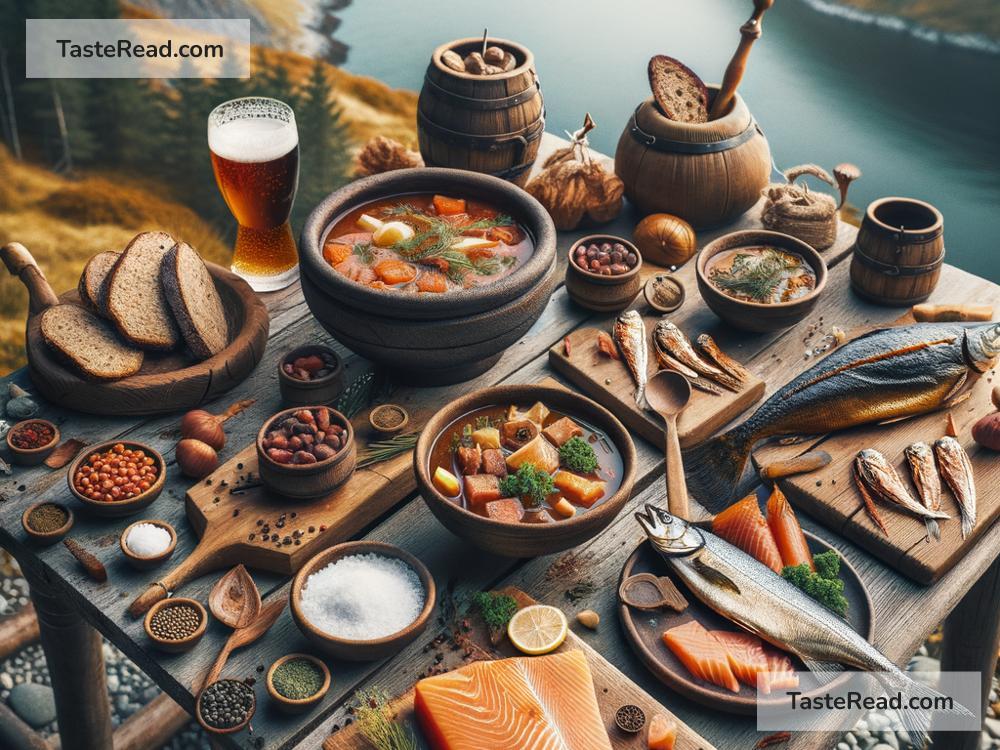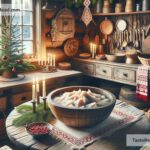Discover Norwegian Fish Dishes Inspired by Viking Heritage
Norway is a land of breathtaking fjords, cold seas, and proud traditions. One of its greatest treasures is its seafood, which has sustained Norwegians for centuries. During the Viking Age (793–1066 AD), the people of Norway relied heavily on fish as a source of food. Fishing wasn’t just a way to survive; it was a way of life. Today, many Norwegian fish dishes carry the legacy of Viking heritage, combining ancient preparations with modern flavors. Let’s dive into the world of Norwegian fish and its deep Viking roots!
Fish: A Viking Staple
In Viking times, Norwegians lived along the coast, making fish one of their main foods. Cold seas provided an endless supply of cod, salmon, herring, and other fish. Vikings used simple methods to store and preserve fish, such as drying, smoking, and salting. This ensured they had food for long voyages and harsh winters.
Fish was not just practical; it was also highly valued. A successful catch was seen as a gift from the gods. Vikings believed the sea was ruled by powerful deities like Ægir, the Norse god of the ocean. Sharing fish with others was a way to honor the gods and strengthen community bonds.
Norwegian Fish Dishes Inspired by Vikings
Many fish dishes in Norway today reflect Viking traditions. Let’s explore a few that showcase history and flavor.
1. Rakfisk (Fermented Fish)
Rakfisk is one of Norway’s most unique dishes. It dates back to Viking times when fermenting fish was a common way to preserve food. The process involves salting freshwater fish like trout and letting it ferment for weeks—or even months.
Although rakfisk has a strong smell and taste, Norwegians love it. It’s often eaten with flatbread, sour cream, and onions. Brave visitors to Norway can try rakfisk during winter celebrations, especially around Christmas. It offers a true taste of Viking heritage.
2. Gravlaks (Cured Salmon)
Gravlaks, or cured salmon, is a dish with origins in the Viking Age. Vikings preserved salmon by salting it and burying it in the ground (the word “grav” means “grave” in Norwegian).
Today, gravlaks is made by curing salmon with a mixture of salt, sugar, and dill. It’s usually served thinly sliced, paired with mustard sauce, bread, or potatoes. Gravlaks is popular across Scandinavia and is enjoyed at festive occasions like weddings and holidays.
3. Klippfisk (Dried and Salted Cod)
Cod has been a staple in Norwegian kitchens since Viking times. Klippfisk is a preparation method that involves drying and salting cod. Vikings would lay the fish on rocks by the sea to dry it under the sun and wind. This method helped preserve fish for long periods, making it ideal for long voyages or trades.
Today, klippfisk is often soaked in water to soften it before being cooked. It’s used in soups, stews, or fried dishes. While it might not look fancy, the history tied to klippfisk makes every bite more special.
4. Lutefisk (Stockfish with Lye)
Lutefisk is a dish with a Viking connection and is prepared using dried cod (stockfish). Vikings dried cod by hanging it on racks during the cold winter months. Lutefisk adds an unusual twist: the dried fish is soaked in water and lye, which gives it a jelly-like texture.
Lutefisk is served with potatoes, peas, bacon, and mustard or béchamel sauce. It’s especially popular during the Christmas season. While lutefisk’s soft texture might surprise you, its strong ties to history make it a must-try dish.
Viking Cooking Methods Still Used Today
While modern kitchens are filled with gadgets, Norwegian cooking still celebrates Viking methods:
– Drying: Drying fish was a key way to preserve food for the Vikings, and it’s still used in making stockfish today.
– Smoking: Smoking fish adds flavor while preserving it. Smoked salmon is a beloved Norwegian dish enjoyed worldwide.
– Salting: Salting fish keeps it fresh for months. This method is essential for dishes like klippfisk and gravlaks.
– Open Fires: Vikings cooked fresh fish over open fires. Today’s outdoor grills bring a similar experience to life during celebrations or camping trips.
These traditional techniques keep the Viking spirit alive in Norwegian cuisine.
Cooking Like a Viking at Home
Want to bring Viking cooking into your kitchen? Start simple:
- Gravlaks: Cure fresh salmon with salt, sugar, and dill. Leave it in the fridge for 2–3 days, then slice and serve.
- Smoked Fish: Try smoking fish at home using a smoker or buy pre-smoked fish from a Norwegian market.
- Stockfish Soups: Create a rich soup using dried fish, potatoes, and cream.
Exploring Viking-inspired dishes doesn’t just satisfy your taste buds—it also connects you to ancient history.
Conclusion: A Taste of Norway’s Past
Norwegian fish dishes offer much more than flavor; they tell a story. From rakfisk to gravlaks, these foods reflect the resourcefulness and traditions of the Vikings. Each bite brings a piece of history to life, celebrating Norway’s rich coastal heritage.
Whether you visit Norway or try cooking these dishes at home, enjoy the adventure. Viking-inspired fish dishes are a delicious way to connect with the past—and honor the spirit of the sea. So, grab a plate and raise a toast to the Vikings! Skål!


